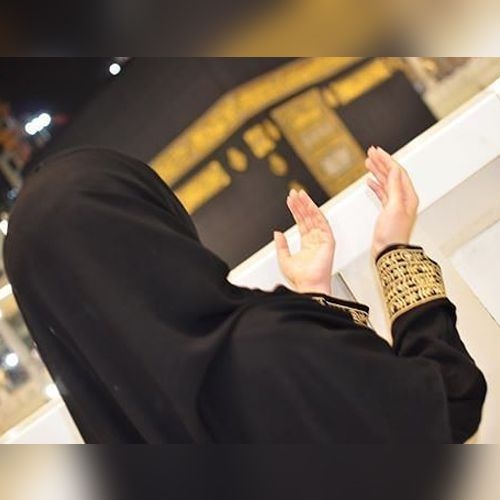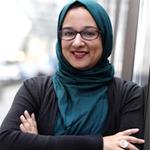6 Ways to Connect With Hajj and a Season of Worship in Dhul Hijjah
Faith
|
Jun 15, 2023
|
4 MIN READ

Image source: Pexels; photo by Konevi
It seems like most Muslims know someone who is going for the Hajj pilgrimage – friends, family members and acquaintances who may be sending back images, videos and messages from their blessed journey. Following along with loved ones on their pilgrimage or reading up about it can cultivate quite a longing in those who are at home and unable to go. Indeed, while the Hajj may not be designed for all Muslims, there are many ways to find that connection, increase one’s worship and cultivate spirituality during these holy days of the Hajj.
I wrote this post 17 years ago about how to connect with the worship of the Hajj from afar, one year after performing the Hajj pilgrimage with my husband. Now it’s time for an update. Here are six things you can do to keep in touch with the Hajj this year and years to come.
1. Follow along with the Hajj as it is being performed.
Set aside some time each day to reflect on the rituals that the Hajjis are performing that day. There are numerous Hajj manuals and sites that explain what is to be done, when it is being done and in which location. Al Jazeera offers this gorgeous 360-degree view and experience of the Hajj, and if you visit Haramain on Facebook, you can watch the Hajj happening live. Think about the meaning of the day’s rituals and how it applies to your life. Look at pictures of people performing those rituals, and imagine yourself doing them along with the Hajjis.
What would you be feeling? What du’a (supplications and prayers) would you make? You may not be able to perform the tawaf or sa’ee, or go to the camps of Mina, the plains of Arafah or sleep in Muzdalifah, but you can set time aside for reflection and prayer dedicated to take advantage of these first 10 holy days of Dhul Hijjah
2. Read a personal memoir of Hajj.

Image source: Wisconsin Muslim Journal
There are a variety of personal travel memoirs describing individual Hajj experiences. Michael Wolfe’s autobiographical work, “The Hadj, an American’s Pilgrimage to Mecca,” describes in comprehensive detail his trip to Mecca via Morocco. Wolfe also edited the anthology “One Thousand Roads to Mecca,” which features 23 short memoirs by a wide variety of personalities from Ibn Batuta to Muhammad Asad.
“Journey of Discovery,” a very intimate account by Shamima Shaikh and Na’eem Jeenah, follows the South African husband and wife on their Hajj and offers the unique perspective of a post-apartheid couple. Ali Shariati’s reflections on the meaning of Hajj in his book, “Hajj,” are also considered to be among the most uplifting of pilgrimage stories.
3. Engage in other acts of worship.
The days leading up to Eid ul Adha – the first 10 days of Dhul Hijjah, are a wonderful time to try and do extra ibadat (worship). Fasting, doing dhikr, reading the Quran, extra prayers, acts of sadaqa (charity) are all great ways to connect with the Hajj. There are so many places to donate and worthy causes to support. Islamic Relief USA and ICNA Relief are just two of many organizations that offer places in need around the world where you can have your Qurbani done as well as many disaster relief campaigns you can contribute to. Also, fasting on the Day of Arafat – the ninth day of the Islamic month of Dhul Hijjah (right before Eid ul Adha), is widely recommended for Muslims, with the belief that the sins of the past year and the year to come will be erased.
4. Buddy up with a new Muslim to help them learn about Hajj. New converts to Islam may not know all that Hajj and Eid ul Adha is all about. Get together with a new Muslim in your community and explain the what, where, who, when and why of Hajj over a leisurely cup of tea. Check to see if your mosque has any such informational activities about the Hajj, and if it doesn’t, organize one. Be sure to bring visual aids! In the process, you’re likely to make a new friend, and you might just learn something yourself.

Image source: Unsplash
5. Volunteer to give a talk in a local school or library about the Hajj.
Though the Hajj season now falls in the summertime, you can still offer to give a talk about the Hajj, especially if your child’s school or local library hosts a cultural or international night. Most public schools and community libraries are eager to have people of different faiths come in and explain their holidays and rituals. Visual aids and different things – like prayer rugs, scarves, ihram clothes, Eid cards and clothes – can go over well, especially with children. Explaining Hajj and Eid ul Adha to non-Muslims can help you remember why it is important to yourself.
6. Make Eid ul Adha a special day.
Let’s face it – all too often Eid ul Fitr at the end of Ramadan gets all the love and attention. But Eid ul Adha, commemorating the story of the Prophet Ibrahim being asked to sacrifice his son Ismail, is such an important holiday. Tell the story in your family and talk about the beautiful sacrifices we make for Allah (S) and for each other. Beautify your homes however you want! If you can, do the Udhiya/Qurbani (sacrifice) yourself and deliver the one-third of meat to those in need yourself. Include the kids whenever possible. Give gifts, get together with friends, get dressed up and take the day from work!
Those who are performing the Hajj are celebrating on this day, and so should we all around the world!
How do you worship and give importance to the first 10 days of Dhul Hijjah and the Hajj season? Share with us in the comments below! A version of this post was originally written by the author several years ago here.
Subscribe to be the first to know about new product releases, styling ideas and more.
What products are you interested in?


